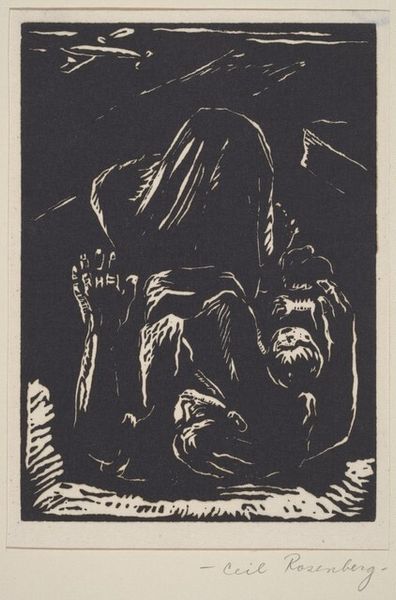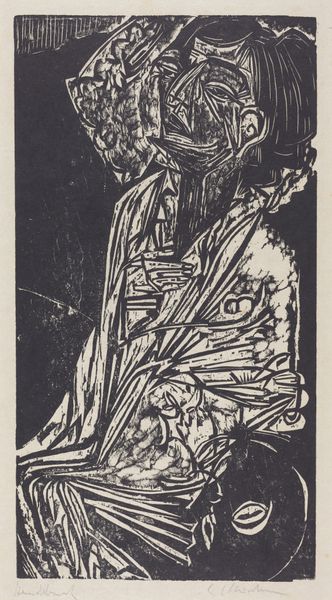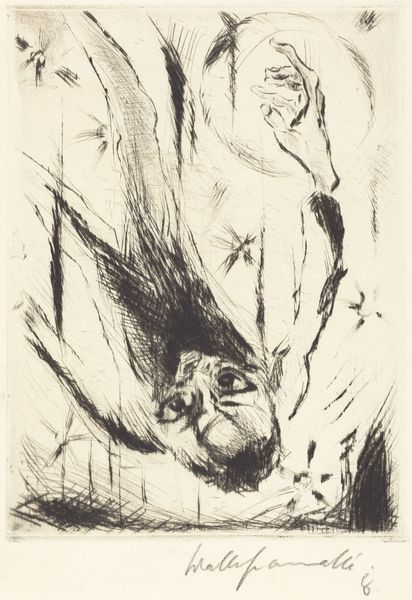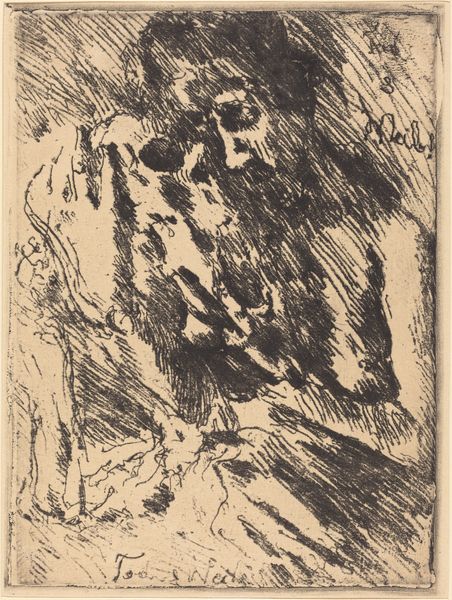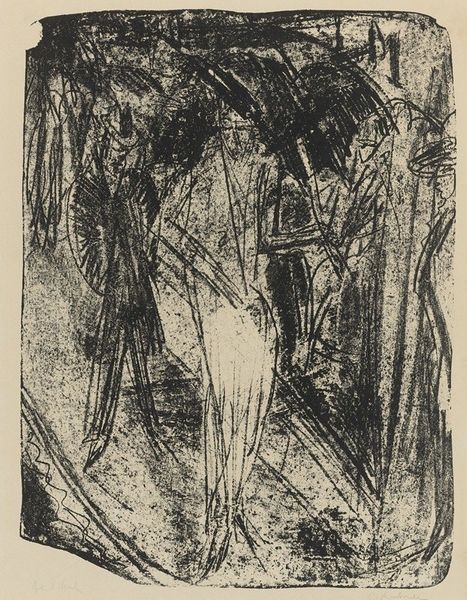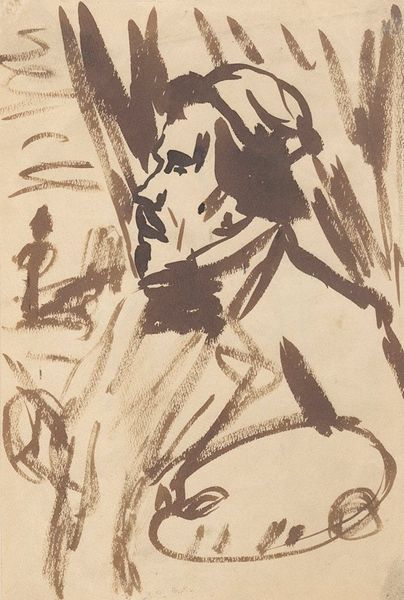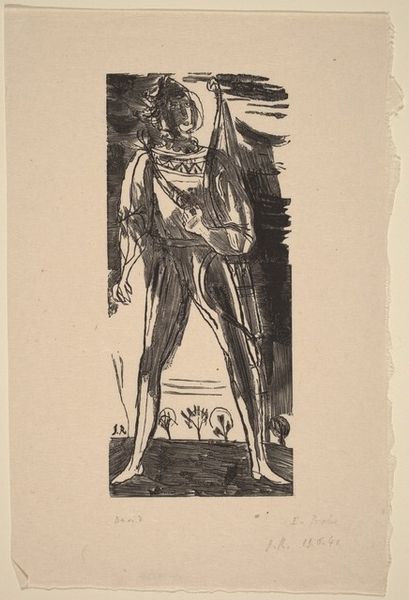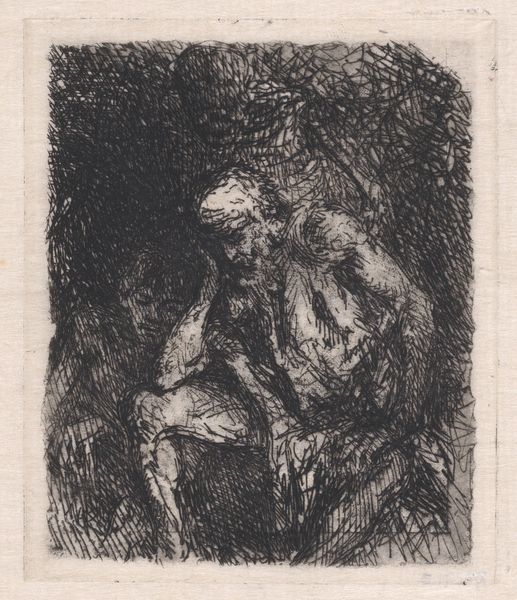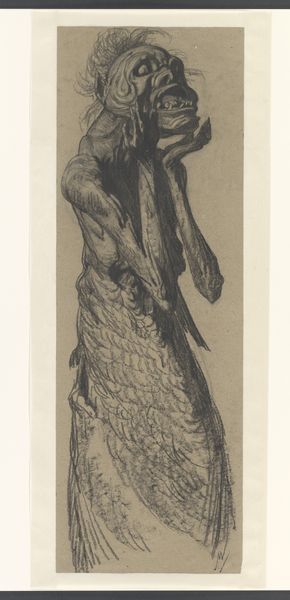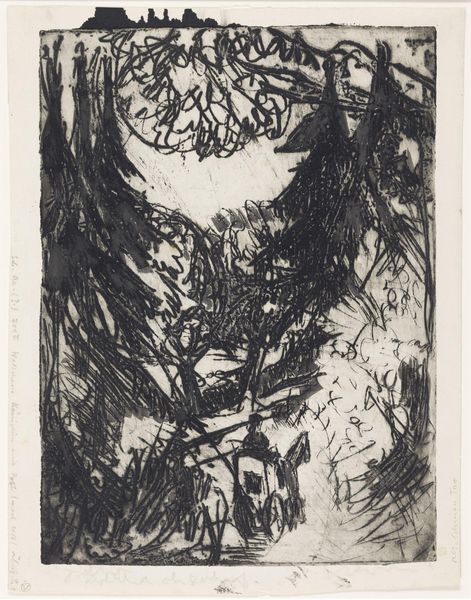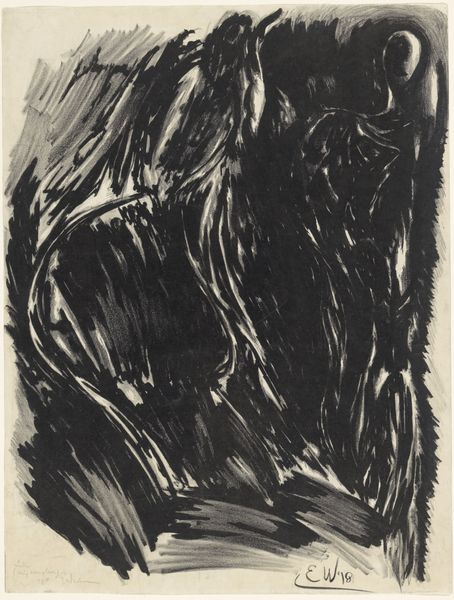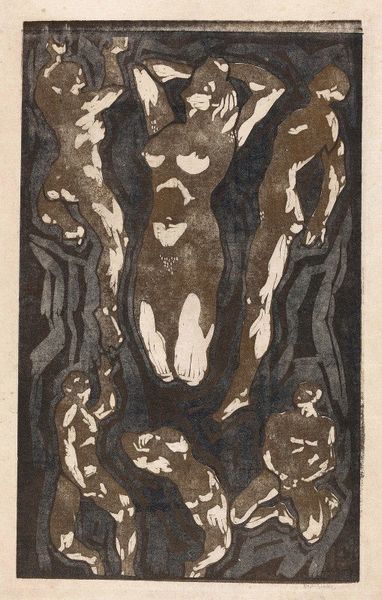
drawing, print, etching, paper, ink
#
portrait
#
drawing
# print
#
etching
#
figuration
#
paper
#
ink
#
geometric
#
expressionism
#
history-painting
Dimensions: plate: 23 × 12.3 cm (9 1/16 × 4 13/16 in.) sheet: 28.5 × 20 cm (11 1/4 × 7 7/8 in.)
Copyright: National Gallery of Art: CC0 1.0
Curator: Take a moment to observe Heinrich Tischler's etching and ink print on paper, titled "Einsame," created in 1914. What's your first reaction? Editor: My first reaction is a chill. It’s dark, brooding... the figures look trapped, and there's a raw emotional quality that just leaps out. The black and white really enhances that stark, uneasy feeling. Curator: It certainly evokes strong feelings. Tischler made this piece during a turbulent period, right before the outbreak of World War One. Artists like him felt a growing sense of dread and isolation. You see the roots of social commentary surfacing through works such as these, becoming an artistic trend that served as the perfect visual language in times of anguish. Editor: Absolutely. The iconography feels potent. Those faces, seemingly multiple, could represent the fragmented self or the dissolution of identity under pressure. The upward facing gazes suggest anxiety, a reach for something higher...but from within a prison of sorts. Curator: That notion of being trapped really resonates. In 1914, there was also widespread discourse about institutional confinement and alienation. Artists became fascinated by spaces – both real and imagined – that trapped or distorted individuals. Editor: That checks out, given those geometric shapes. To me they feel like fragments of broken mirrors. Symbols of a shattered perception? What stands out most is the primal emotion conveyed. A collective psychological state made visible. This predates surrealism but feels similarly raw and honest about psychological disturbance. Curator: The print's aesthetic clearly borrows from the Expressionist movement. The themes of alienation, anxiety, are so in tune with a societal and individual turn inward... The artist's world in tumult is very palpable, isn’t it? Editor: Yes, it's less of a portrait and more of a psychological landscape, the kind where the figures have been devoured by internal discord. The very dark and brooding style only amplifies its effect on its audience. Curator: The stark lines of the etching add to that. It becomes a really visceral representation of societal dread at that time. A signifier, and a work of historical importance in regards to the human condition and the state of despair during that particular moment in European history. Editor: Indeed. Looking at "Einsame," one gets the distinct impression that it holds both cultural weight, while retaining some incredibly painful emotions on an individual level. A fine mirror of an extremely volatile time.
Comments
No comments
Be the first to comment and join the conversation on the ultimate creative platform.
